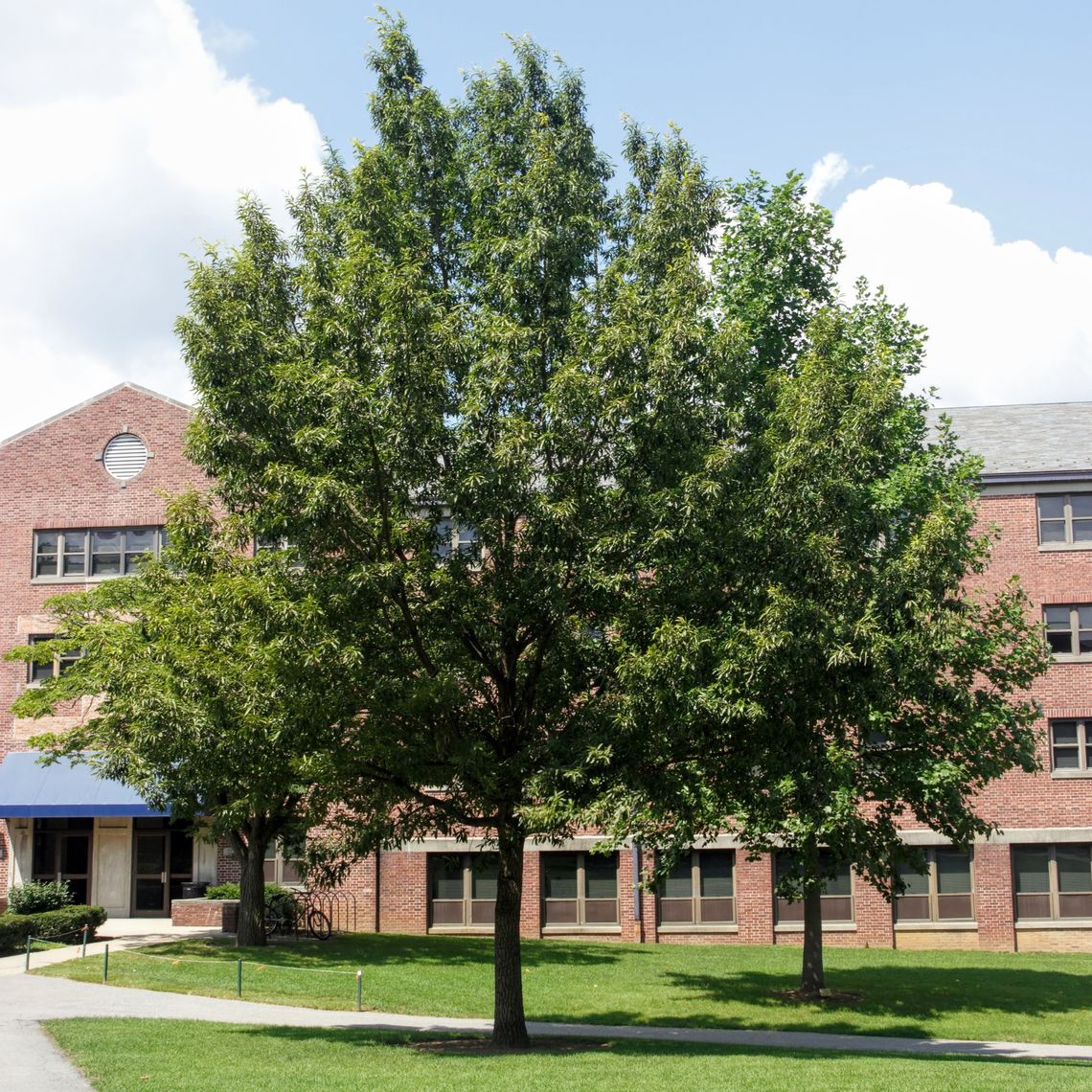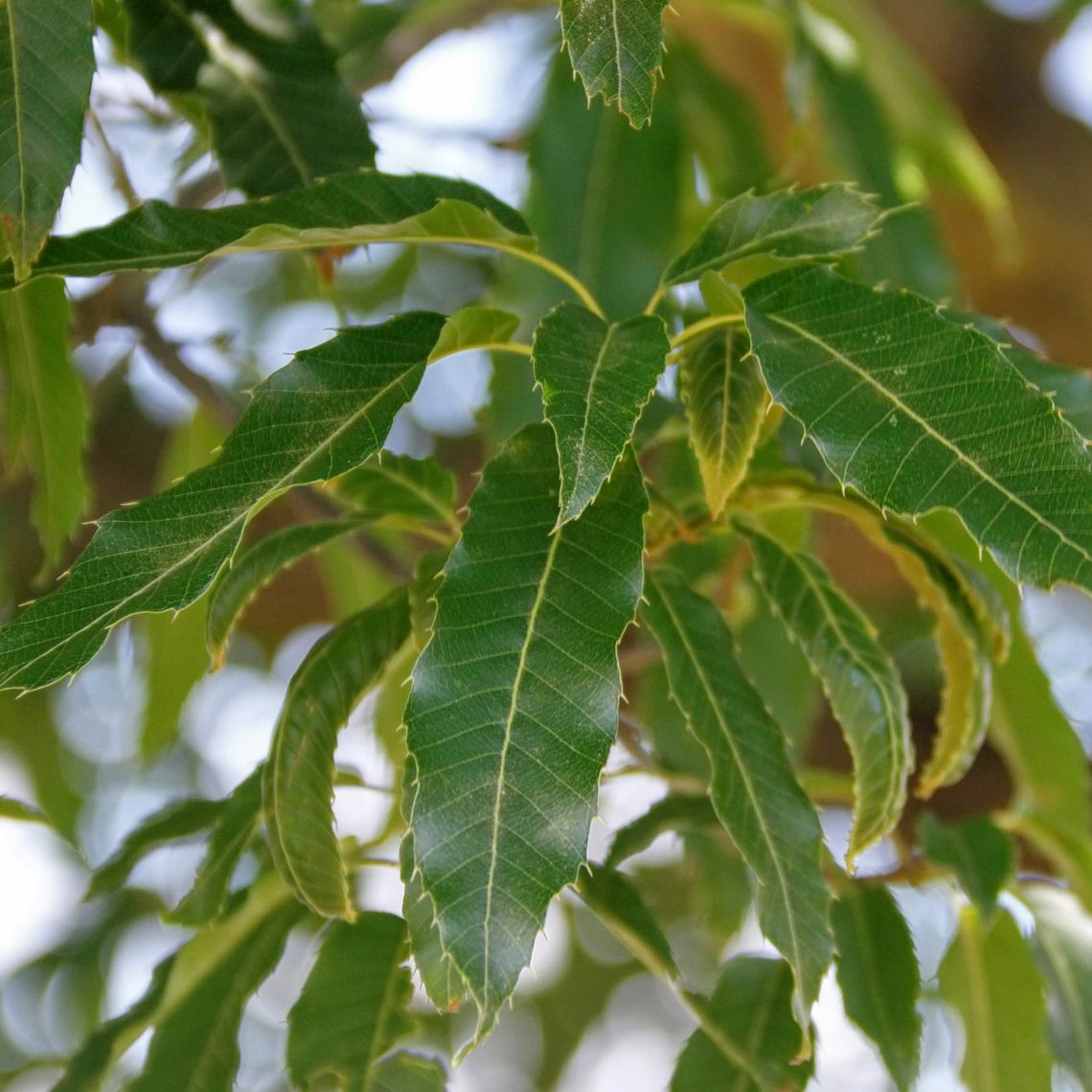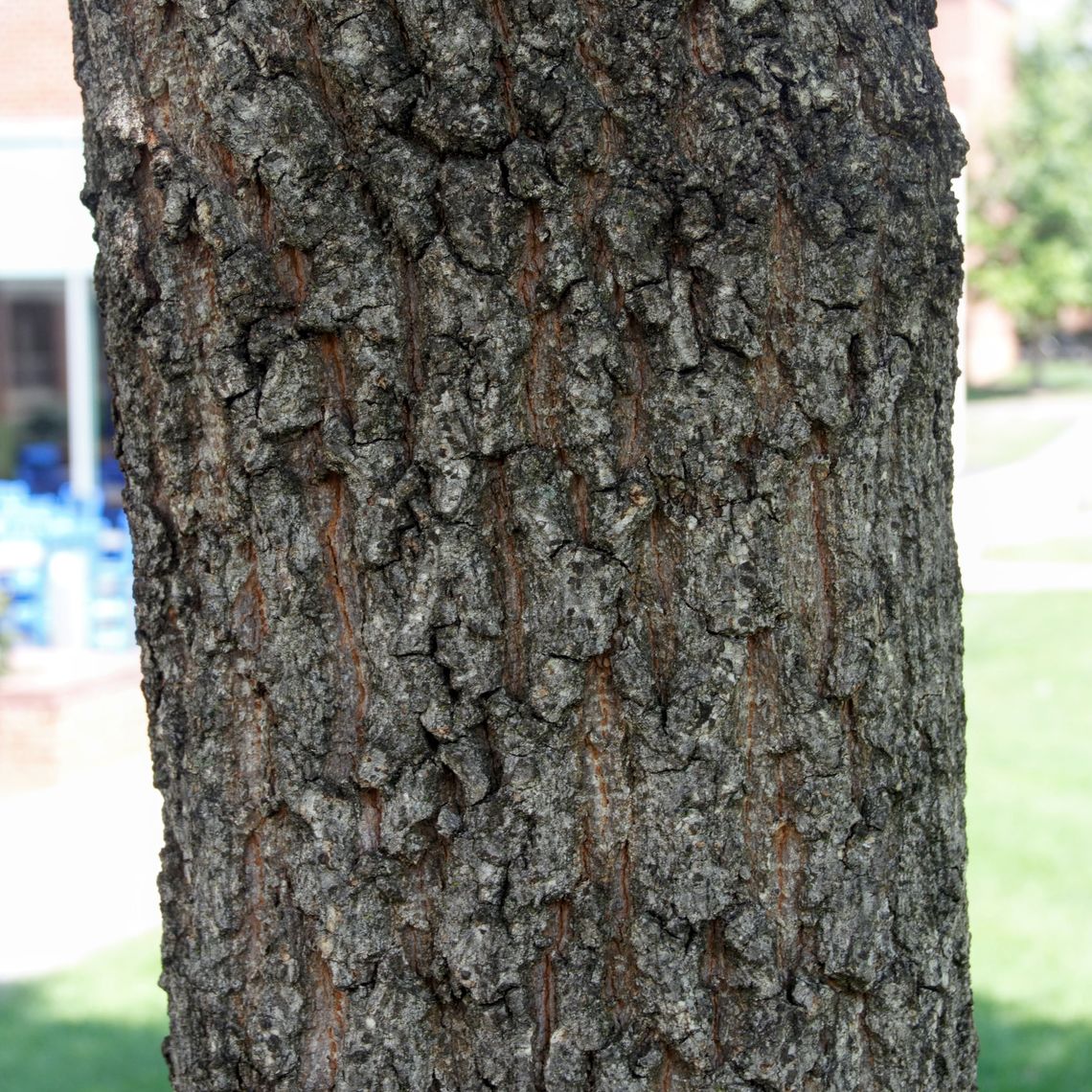Sawtooth Oak (Quercus acutissima)
The sawtooth oak has very long, tear-shaped, and prominently serrated, glossy dark green leaves. These leaves will turn yellow or golden brown in the fall. The oval brown acorns are topped with interesting, scaly, almost hair like cups that cover part of the acorn. After about 10 years, the tree's acorn crop can become very abundant. These acorns are an important food source to wildlife.
Family: Fagaceae (Beech)
Characteristics: The 7-inch-long leaves are elongated, tear-shaped, prominently serrated, and dark green. In the fall, leaves turn yellow to golden brown. This tree produces insignificant yellow-green flowers that appear as catkins. The oval brown acorns are encased in scaly cups that cover part of the acorn. Bark is gray to black, deeply ridged, and has a cork-like appearance. When young, this tree is pyramidal in shape and it becomes rounded to broad rounded with age. It grows 35-45 feet high and wide.
Foliage: Deciduous (leaves lost seasonally)
Geographic Origin: China, Korea, Japan, Himalayas (non-native)
Cultivation Notes: Requires low maintenance. Does best in full sun. Prefers medium moist and well-drained soils, though is able to adapt to a wide range of soil types. This tree is tolerant to heat and humidity.
Number on Campus: 1
Sources: Dirr, Morton Arboretum, Missouri Botanical Garden



